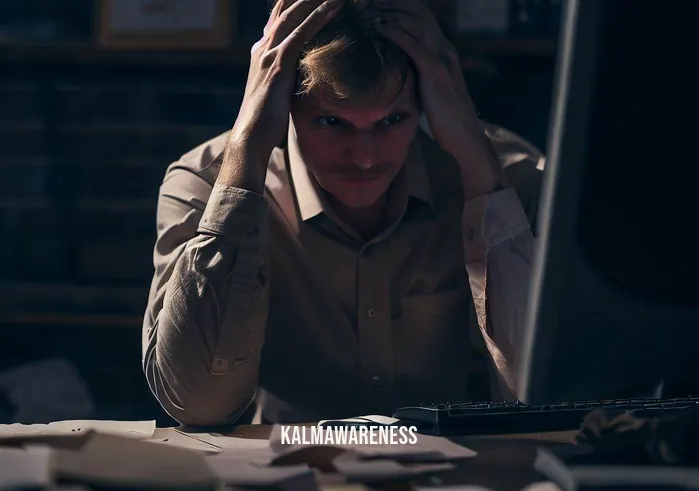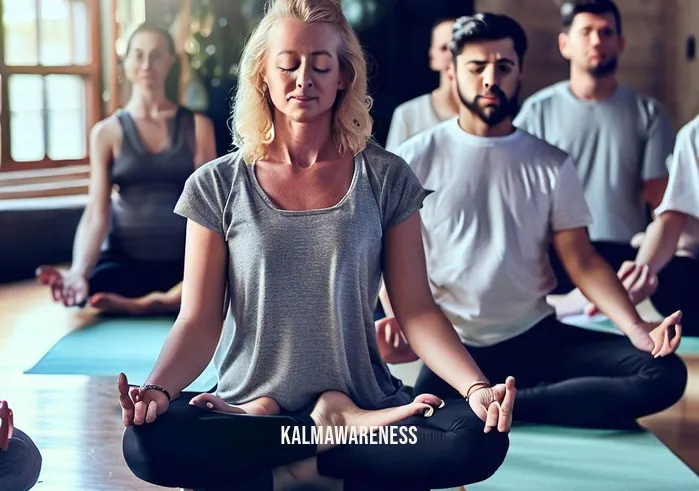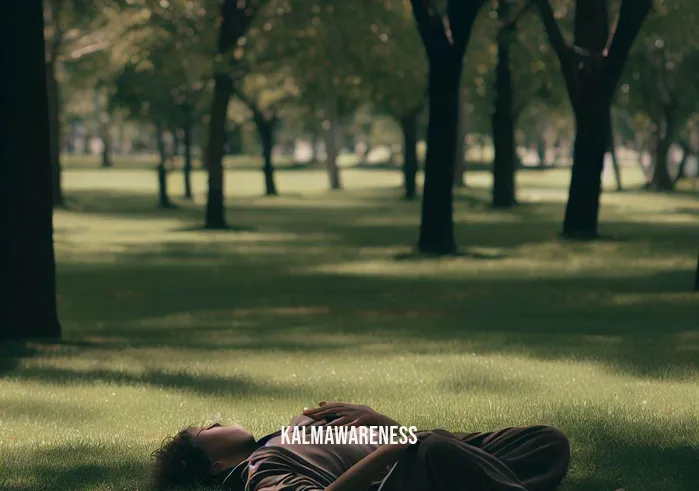Whole Body Breathing: The Gateway to Mindfulness and Relaxation
Introduction
In a world increasingly obsessed with productivity and efficiency, the nuances of simply being human—like breathing—often take a back seat. However, whole body breathing is not just about oxygen intake. It’s an integrated practice that combines aspects of breathing, mindfulness, body awareness, relaxation, and calmness. In this segment, we’ll dive deep into understanding the basic principles of whole body breathing and how it’s different from regular breathing techniques.
The Concept of Whole Body Breathing
Whole body breathing is more than just inhaling and exhaling; it’s about channeling your breath to different parts of the body, creating a symbiotic relationship between the mind and body. The idea is to attune the mind to the sensations of breath throughout the body, which contributes to achieving a peaceful state of mind in which thoughts are not occupied by worry. This unique approach to breathing allows us to focus on the present moment, be more aware of our body, and ultimately experience tranquility.
How it Differs from Regular Breathing
- Attention: In regular breathing, we often take the process for granted. Whole body breathing, however, requires your undivided attention and consciousness.
- Mindfulness: The practice involves attaining a peaceful state of mind by keeping distractions at bay. While meditation made simple often includes the element of some meditation exercises like focusing on an object or mantra, whole body breathing directs your focus toward the sensation of the breath moving within your body.
- Body Awareness: One unique aspect is the inclusion of body awareness. Unlike EMDR meditation, which works by allowing you to emotionally process past traumas, whole body breathing focuses on the physical sensations of the present moment.
- Relaxation: While various techniques like rouse yoga and mindful hypnobirthing focus on different aspects of relaxation, whole body breathing offers a more comprehensive path to calmness.
Science and Spirituality
The roots of whole body breathing can be traced back to ancient wisdom, yet it is increasingly supported by modern science. It’s akin to a judgement of the wise, a balancing act between scientific research and spiritual experience. Jack Kornfield’s Meditation for Beginners, for example, mentions how the practice not only enhances mindfulness but also positively impacts one’s physiological state.
A study demonstrated that practicing whole body breathing regularly resulted in a better sleep pattern, supporting the idea of mindful movement for sleep. Another research suggested that the frequency of 256 Hz during deep breathing sessions led to additional benefits in terms of stress reduction and improved mental clarity.
“Breathing is the first act of life, and the last. Our very life depends on it. Since we cannot live without breathing, it is tragically deplorable to contemplate the millions and millions who have never mastered the art of correct breathing.”
— Joseph Pilates
Why Should You Keep Reading?
In the next segment, we’ll explore how you can get started with whole body breathing. We’ll discuss sustainable self-care strategies and how to integrate whole body breathing into your daily routine. Additionally, we will explore methods like mirror gazing for spiritual benefits and techniques like “touch that part of the body” to deepen your practice. If you’re someone who finds yourself asking, “Can you meditate lying down?”, or wondering about other ways to achieve relaxation and mindfulness, you won’t want to miss what comes next.
Continue reading to unravel the magic of whole body breathing and to learn actionable tips that can change the way you experience life, one breath at a time.

Harnessing the Power of Whole Body Breathing: Techniques and Benefits
Expanding the Boundaries: Beyond Basic Breathing
As we move beyond the introductory concepts of whole body breathing, it’s crucial to explore the diversity of techniques available. This multi-faceted approach isn’t limited to just breathing through your nostrils; it encompasses a wide range of practices that involve your entire body. Indeed, as we shall see, it can even be tailored to suit specific needs, like the mindfulness techniques recommended for teenagers walking or if you ponder upon how to spell stabilize your emotional state through breath control.
Techniques That Elevate Your Practice
- Diaphragmatic Breathing: Also known as “belly breathing,” this technique encourages you to breathe deeply into your diaphragm, thereby maximizing oxygen intake.
- Breath Awareness: This technique teaches you to be fully aware of your breathing, similar to one technique for each blessed day where you practice a different mindfulness activity daily.
- Rhythmic Breathing: This involves breathing at a consistent rhythm, much like the steady frequency of 256 Hz benefits in sound therapy.
- Coordinated Movement: This technique integrates whole body breathing with physical activities. If you’re familiar with EMDR meditation, you’ll find this technique equally intriguing but geared toward enhancing body awareness.
- Mindful Pausing: Similar to the concept of “keep in mind” where you consciously hold a concept or affirmation, this technique requires you to pause between inhales and exhales, allowing for a moment of reflection.
How Does Each Technique Work?
| Technique | Objective | How to Practice |
|---|---|---|
| Diaphragmatic Breathing | Maximize oxygen intake | Inhale deeply into the diaphragm, exhale fully |
| Breath Awareness | Enhance mindfulness | Observe each breath, note its quality |
| Rhythmic Breathing | Consistency | Maintain a consistent breath rhythm |
| Coordinated Movement | Enhance body awareness | Pair each breath with a physical movement |
| Mindful Pausing | Foster reflection | Pause for a few seconds between each inhale and exhale |
The Unspoken Benefits
- Enhanced Mind-Body Connection: Whole body breathing creates a synergistic relationship between the mind and body, thereby enhancing your overall sense of well-being.
- Sustainable Self-Care: Unlike quick fixes, whole body breathing serves as a sustainable self-care practice that can be incorporated into your daily routine.
- Stress Reduction: The practice enables you to attain a peaceful state of mind, thereby acting as a stress-buster.
- Improved Focus: Techniques like rhythmic breathing can significantly improve your ability to concentrate on tasks, which in turn improves productivity.
The Role of Whole Body Breathing in Unique Situations
Whole body breathing can also be tailored to suit specific needs. For example, you may find yourself asking, “Can you meditate lying down?” The answer is yes, whole body breathing can be adapted to different postures and situations, making it versatile and accessible. This flexibility also means that whole body breathing techniques can be integrated into other relaxation practices, like mirror gazing for spiritual benefits.
Ready for the Next Step?
In our next segment, we’ll focus on the practical application of whole body breathing. We’ll discuss how to make this practice a part of your daily routine and delve into the scientific evidence supporting its benefits. Expect tips on how to effectively practice whole body breathing at work, how to involve your family in the practice, and even how it can be combined with activities like walking. If you’ve been wondering how we get deep so fast into the transformative effects of whole body breathing, the next chapter is a must-read.
Stay tuned to delve deeper into the practicalities and science-backed benefits of whole body breathing. Your journey toward a balanced, healthier life is just a breath away.

Breathing Life into Your Days: The Inspirational Side of Whole Body Breathing
Finding Hope Through Breath
Whole body breathing isn’t just about the mechanics of inhaling and exhaling; it’s a transformational experience that can breathe life into your very existence. The practice imbues us with hope, an essential but often overlooked ingredient for a fulfilling life. The inspirational component of whole body breathing may not be immediately evident, but it becomes apparent when you witness its effects on your mindfulness journey.
“Inhale the future, exhale the past. The breath you take now is the only thing that’s real.”
Resonating with Mindfulness
Whole body breathing resonates deeply with the concept of mindfulness. It’s not merely a reactive stress-relief tool but a proactive life practice. It brings about an awareness that we could compare to the judgement of the wise, allowing us to make informed decisions and live more consciously.
“Breathing in, I calm body and mind. Breathing out, I smile. Dwelling in the present moment, I know this is the only moment.”
— Thich Nhat Hanh
Uplifting the Spirit: Anecdotes and Personal Stories
The inspirational aspects of whole body breathing are often best understood through personal anecdotes. For instance, it’s not uncommon for practitioners to experience emotional stability, akin to how the right frequency, like 256 Hz, benefits our well-being. Stories of people who found solace and even joy in moments of distress through the practice provide us not just with proof but also with inspiration.
Jack Kornfield’s Meditation for Beginners emphasizes the transformative effects of whole body breathing. Imagine you’re someone who always wondered, “How do we get deep so fast into a practice?” The answer lies in the steady commitment to being present, and personal accounts attest to the rapid yet profound impact whole body breathing can have on your life.
“The quality of our breath expresses our inner feelings.”
— T.K.V. Desikachar
Overcoming Challenges with Whole Body Breathing
One of the most remarkable features of whole body breathing is its adaptability. It can be tailored to different life stages and circumstances. For instance, the practice can be incredibly helpful for teenagers walking the fine line between adolescence and adulthood, as it provides them with the tools to cope with their ever-changing emotional landscape. Additionally, whole body breathing has proven beneficial in more specific mindfulness-based methods like mindful hypnobirthing, enhancing not just the physical but also the emotional and spiritual experience of childbirth.
“The wisest one-word sentence? Breathe.”
— Terri Guillemets
What Awaits You in the Next Chapter
As we move forward, we’re about to delve into the practicalities of whole body breathing. If you’ve been intrigued by the transformative power of this practice but are not sure how to implement it in your daily routine, the next chapter is for you. We will discuss actionable strategies to seamlessly weave whole body breathing into your life, including during your workday and even while engaging in seemingly mundane activities.
So if you’re ready to elevate your practice from a mere stress-relief tool to a lifestyle—making it an element of your sustainable self-care routine—stay tuned. We’re about to dive into a realm where each breath brings new possibilities and a better you.

The Anatomy of Whole Body Breathing: A Comprehensive Guide
The Complex Simplicity of Whole Body Breathing
Whole body breathing, or full-spectrum breathing as some like to call it, might seem straightforward at first glance. However, when you start peeling back the layers, you realize it involves a delicate orchestration of mental, physical, and even spiritual elements. Far from being a simple mechanical act, it’s a rich tapestry of intentional movements and mindsets. In some ways, it’s like a form of rouse yoga, where breathing becomes an active, engaging practice that lifts both body and mind.
Core Elements of Whole Body Breathing
Whole body breathing can be broken down into several core elements. These aren’t just “tips”; they are foundational aspects that differentiate this method from basic breathing exercises:
- Awareness: The initial step is to become fully aware of your breathing pattern, similar to how EMDR meditation develops an acute sense of your mental state.
- Control: This involves regulating the breath, akin to how one might stabilize themselves emotionally or mentally.
- Integration: Here, you tie breathing to specific activities or thoughts, much like you’d integrate mindfulness into your daily actions.
- Adaptability: This refers to how whole body breathing can be adapted to various situations, much like the flexibility of can you meditate lying down or standing.
- Intentionality: The element of purpose or intention is what takes your practice from being passive to active. Just as you’d keep in mind the definition of a term, you intentionally focus on each breath.
The Five Phases of Whole Body Breathing
- Preparation: Aligning your physical posture and setting an intention.
- Inhalation: The act of drawing air into your body.
- Retention: The brief pause between inhalation and exhalation.
- Exhalation: The act of releasing air from your lungs.
- Reflection: A momentary pause to assess your mental state, similar to the pause in judgment of the wise.
Involves Attaining A Peaceful State of Mind
One of the pivotal benefits of whole body breathing is that it involves attaining a peaceful state of mind in which thoughts are not occupied by worry. It’s this tranquility that sets the stage for deeper meditation and mindfulness practices. This peaceful state is not just the absence of stress; it’s a proactive form of calm that serves as a protective layer against life’s inevitable ups and downs.
Quick Tip: If you’re new to meditation, don’t worry. You might find that meditation made simple through whole body breathing can serve as a perfect gateway into broader mindfulness practices.
The Multi-faceted Applications
Whole body breathing doesn’t just belong on a meditation cushion. Its applications are as versatile as the practice itself:
- Workplace: A couple of minutes of whole body breathing can serve as a mini-vacation from work stress.
- Fitness Regime: Incorporate it into your mindful movement or even during your sleep to boost recovery.
- Personal Relationships: Use whole body breathing techniques to stabilize your emotions and improve communication.
On the Horizon: The Final Chapter Awaits
As we prepare to turn the page to the final chapter, we’ll examine how you can take what you’ve learned and put it into action. Our last installment promises to be a culmination of everything we’ve discussed, offering a concrete roadmap to make whole body breathing a steadfast part of your life. You won’t just read about the element of some meditation exercises; you’ll understand how to make each day blessed through the transformative power of whole body breathing.
If you’ve ever wondered how to bring everything together into a sustainable, daily practice, you won’t want to miss the final chapter. Prepare to embark on a journey that will take your whole body breathing to the next level.

A Breath of Fresh Perspective: Reflecting on Our Journey with Whole Body Breathing
The Essence of Whole Body Breathing Revisited
We’ve traveled quite a distance in our exploration of whole body breathing—a practice also known as total body respiration or comprehensive breath engagement. This journey, I hope, has been as enlightening for you as it has been for me. We have seen how it not only benefits your health but also enriches your emotional and spiritual well-being, much like the gentle art of mirror gazing does for your spiritual benefits.
What We’ve Gained: A Quick Recap
We’ve broken down the mechanics, dug deep into the nuanced complexities, and even found inspiration in the comforting simplicity of whole body breathing. Remember, it’s not just an exercise but a transformative practice that can be as nourishing as sustainable self-care.
- Awareness: Understanding the unique landscape of your own breath.
- Control: Mastering the ebb and flow of your inhalations and exhalations.
- Integration: Incorporating this practice seamlessly into your daily life.
- Adaptability: Customizing it to suit diverse circumstances and environments.
- Intentionality: Making each breath a conscious, purposeful action.
Highlights and Hidden Gems
Just as a Jack Kornfield meditation for beginners offers multiple layers of benefits, our exploration of whole body breathing has revealed several gems:
- Mindfulness: The practice makes you more aware, akin to teenagers walking mindfully and observing the world around them.
- Calmness: Achieving a state of serenity, similar to the 256 Hz benefits linked with deep relaxation.
- Body Awareness: Learning to connect with every part of your being.
What Lies Ahead
Our exploration may be concluding here, but the road to mastering whole body breathing is a long, fulfilling one, replete with discoveries each day—yes, one for each blessed day.
Take-Away Quote: “Breath is the bridge which connects life to consciousness, which unites your body to your thoughts.” – Thich Nhat Hanh
Your Next Steps: A Call to Action
So where do you go from here? Your journey has only just begun!
- First, revisit previous sections if you need a refresher or further clarity.
- Second, explore more of our content; perhaps start with how we get so deep so fast, to understand how this practice can quickly become deeply ingrained.
- Third, join our online forums and connect with a like-minded community that can offer tips, insights, and emotional support.
A Heartfelt Thank You
Thank you for joining me on this transformative exploration of whole body breathing. It has been a pleasure guiding you through this immersive journey. Rest assured, there’s more insightful content awaiting you in our future editions.
As we part ways for now, I encourage you to breathe not just with your lungs, but with your whole body, your whole being. It’s an art, a science, and a journey—yours to embark on.
Take that breath. You’ve earned it.





